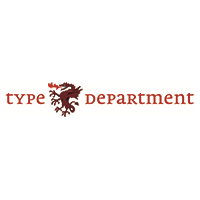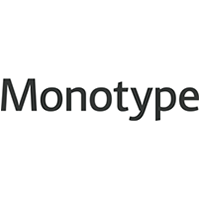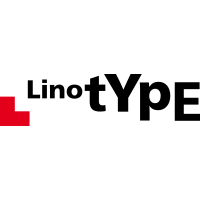
The last week of February was a horrific one for the type community. Within the space of three days we lost three personalities, each important to the world of typography in his own way – Peter Bruhn on February 22, and Mike Parker and Emil Yakupov on February 25. That Tuesday night at 22:30 Emil Yakupov's heart simply gave out after his usual workout at the local gym. Yakupov was the co-founder and CEO of ParaType, the first Russian type foundry. He was instrumental in the revival of Cyrillic typography and type design and its introduction into the Western world after the breakup of the Soviet Union and the subsequent perestroika. Emil's passing comes exactly 2 years and 2 days after the untimely death at 62 of Vladimir Yefimov, his fellow co-founder and art director of ParaType.
A native from Ufa – the capital of the Republic of Bashkortostan located between the Volga River and the Ural Mountains – Emil Yakupov studied at the Moscow Institute of Management. After graduating he developed a keen interest in personal computers, which led him to be appointed senior systems analyst at the National Research Institute for Synthetic Fibre in Kalinin (now Tver). Even though he seemed set for a scientific career after earning a Ph.D. in Engineering from the Leningrad Institute of Technology in 1987, his life drastically changed course when he met Stepan Pachikov, the co-founder ParaGraph International. Emil joined the upstart joint venture, which saw him become an authority in the field of typography and type design.

The Slavic circle – Adam Twardoch with Yuri Yarmola, Fontlab Ltd. (l.) and Emil Yakupov, ParaType (r.) at the ATypI 1998 conference in Lyon, France.
Photo @ Adam Twardoch
To understand the importance of Emil Yakupov and Paragraph Intl. (later ParaType), one must envision the state of digital type design in the nineties. After more than a decade of multilingual fonts thanks to OpenType and the possibility of tens of thousands of glyphs per font thanks to the Unicode standard, we have a hard time imagining a world where typefaces were (with a rare exception) exclusively Latin-based, and restricted to 256 characters per font. I originally started at FontShop BeNeLux in 1991, the year the last classic loose-leaf binder FontShop catalogue was published. Back then the only options for Cyrillic (and Turkish, Central-European, Baltic, and so on) were fonts offered by MacCampus. The designs were based on Times and Helvetica, with the odd Garamond, ITC Avant Garde Gothic, or Optima standing out in the drab crowd. Because of the 256-character restriction sacrifices had to be made. Most often the Cyrillic characters replaced accented letters, mathematical characters, lesser-used punctuation and symbols, … This meant those fonts always were incomplete, one way or another, which created a number of problems. One of them was that – when producing a multilingual publication – you either had to stick to mostly Times and Helvetica, or accept that the different languages would be set in different typefaces.
The big game-changer was ParaType. The company was established in 1998 as a successor to the Type Department of ParaGraph Intl, which had already been commercialising fonts with Cyrillic and other encodings. Its importance was twofold: besides creating their own original typefaces and Cyrillic complements to a more diverse range of classic designs, ParaType also started collaborating with established foundries like Bitstream, ITC, Linotype, Monotype, FontFont and many others, helping them expand their fonts with quality Cyrillic character sets. Adam Twardoch explains:
ParaType (…) was instrumental in building a bridge between the Russian typographic culture and the rest of the world. More than anybody else, Emil was the architect and tireless upholder of that bridge. Under Emil, ParaType has published hundreds of original Cyrillic typefaces and digital revivals of classic Russian and Soviet typeface designs.

Emil Yakupov, ParaType at TYPO Berlin 2013.
Photo @ Eugene Yukechev

Emil Yakupov, Vasilij Birjukov, Prix Charles Peignot winner Alexandra Korolkova, and Type & Media graduate Maria Doreuli at TYPO Berlin 2013 "Touch".
Photo @ Eugene Yukechev
Already the 1993 FontShop catalogue and its 1995 update featured exciting display fonts and scripts with a Cyrillic counterpart, and the options were rapidly expanding. For FontFont for example ParaType contributed to parts of the FF Meta and DIN families, and they made the Cyrillic versions of FF Unit, Unit Slab and OCR-F. Finally multilingual typesetting became less frustrating, with a steadily broadening typographic palette at the disposal of designers and other users working in an increasingly globalised world. His friend and colleague Thomas Phinney, who worked with Emil on bringing the ATypI international typography conference to Saint Petersburg in 2008, confirms:
Emil loved type, and was one of the single people most responsible for the renaissance of Cyrillic Typography and type design after the breakup of the Soviet Union.
Yet Cyrillic (and Turkish, Central-European, Baltic, and so on) typefaces were not ParaType's only areas of expertise. The company was very advanced technologically. To name just one example, in the mid-nineties they launched HandFont, a service that allowed users to have their personal handwriting transformed into a perfectly working digital font. Despite the successes of his company Emil Yakupov preferred to work in the background. His efforts were never for personal gain, but for the greater good and to advance the field of typography. Thomas Phinney again:
Emil never sought the spotlight for himself, and did much to honor and help others, including me.
Adam Twardoch adds:
Emil was a quiet, wise, kind and incredibly modest man equipped with a cheeky smile and subtle dry wit. He put tremendous personal efforts into publications created by ParaType and events organized by his company — these efforts were always about culture rather than pure business.
Emil managed the digital type foundry ParaType for fifteen years, during which time its library grew six times its original size and became an established name in the international digital type business. But the other, lesser-known but equally important role he played was that of a mentor and a coach, and champion of typographic awareness. With his passing Cyrillic typography lost one of its main driving forces.
The obituary on ParaType News, translated from Russian by Maxim Zhukov.Adam Twardoch's tribute on TypeDrawers.












